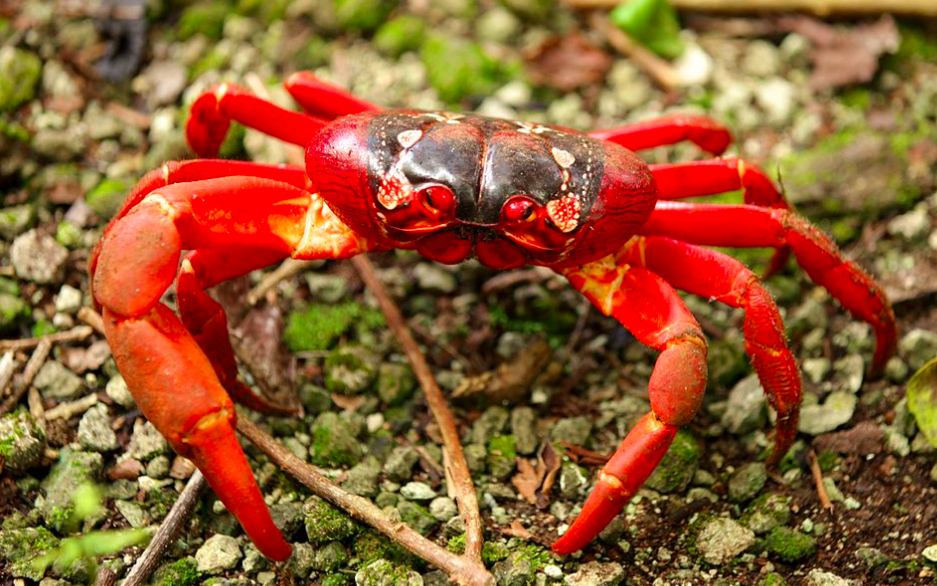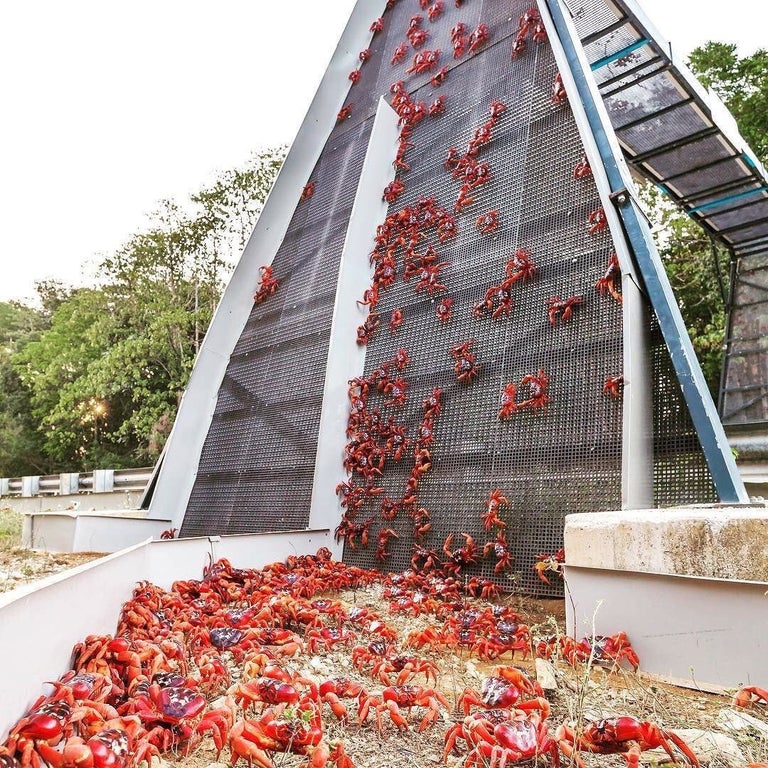Why Did the Crab Cross the Road?
Christmas Island is a 35 square mile (152 km^2) island in the Indian Ocean, about 350 miles (580 km) south of the Indonesian island of Java. (Here’s a map.) Given that it’s pretty remote, you shouldn’t be surprised to learn that there are only about 1,500 people who live there.
But those fifteen hundred people aren’t alone. They’re surrounded by about 35 million of these guys.

That’s a Christmas Island red crab, a species indigenous to the island, as its name would suggest. They live in the islands’ forests — usually. Once a year, typically in November or December, the crabs migrate to the island’s beaches to breed. The male crabs tend to return to the forest after about a week; the female crabs remain with the eggs for a bit longer, but ultimately, they go back to the forest as well.
So that’s why the crab crossed the road: to get to the beach, in order to procreate and keep the species going. And if that’s not a very fun answer, don’t worry — the title of today’s article is, in a sense, the wrong question. The right question should be “how did the crab cross the road?”
The annual crab migration is a major event for the island and a point of local pride. (Imagine 35 million crabs taking a coordinated walk to the sea.) But when crabs cross the road, bad things happen. The crabs themselves are obviously at risk to cars zipping by — in most cases, a multi-ton vehicle is going to win a battle against a tiny crustacean passing underfoot (or underwheel, to coin a word). And apparently, the crabs can cause harm to humans; the crabs’ Wikipedia entry notes that the crabs “sometimes cause accidents due to their tough exoskeletons which are capable of puncturing tires.”
Shutting down roads is an option, but not a great one — people still need to get from point A to point B. Underpasses are a better solution, and there are as many as 30 such crab tunnels around the island. But the boldest way forward is a bridge, as seen below.

The crabs’ path from the forest to the beach is predictable — as one official told ABC News Australia, the creatures “take the most direct route possible from their burrows in the rainforest terraces down to the coast.” As a result, it’s possible to build pathways that are virtually guaranteed to get foot — er, claw traffic. According to the Telegraph, authorities place a total of 20 km of plastic barriers up, re-routing the crabs to the underpasses and the bridge above.
And for the 1,500 or so people who live on the island, the bridge is an investment that they may recoup financially. The annual crab migration is already a big tourism draw and the constant stream of hundreds of crabs flowing over the bridge only enhances the experience. A Christmas Island marketing manager told ABC News Australia that “Sydney can have its Harbour Bridge, and San Francisco its Golden Gate bridge, but it’s our crab bridge which is currently wooing tourists from all over the globe.”
Bonus fact: Christmas Island is so named because in 1643, an English sea captain sailed past it on December 25th and named it for the holiday. The people on the island, though, probably don’t think much of the name — very few celebrate Christmas. According to the Australian government (which administers the island), as of 2016, “the most common responses for religion on [Christmas Island] were Islam (19.4%), Buddhism (18.1%) and Catholic (8.9%). 15.2% identified as having No Religion.”
From the Archives: Bridge Over Former Water: The world’s best unnecessary bridge?
